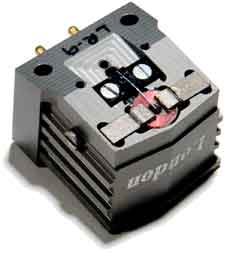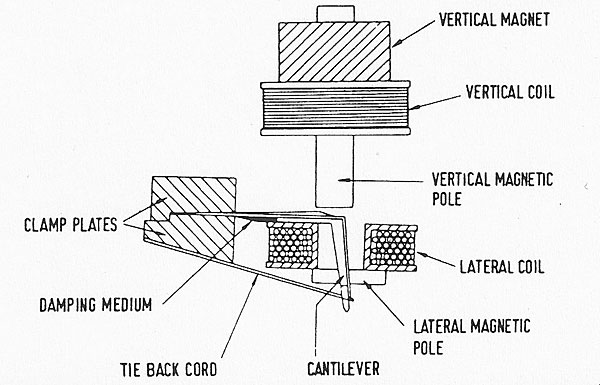Moving iron allows for the lowest mass on the cantilever of all three traditional classes, making the cartridges very lively and dynamic. Put enough turns on the fixed coils and you can have the advantages of high output too (a simpler phono stage and less tendency to hiss). Peter Ledermann has admitted he only makes low output MI cartridges so that buyers can use their expensive MC phono stages with them. Don't forget that SS, Grado and Nagaoka employ a traditional cartridge design, utilising iron or an alloy of it as the only moving mass on the proximal end of the cantilever, but if you go to an older arrangement, that of the Decca "tip-sensing" cartridges, it is the thin iron armature that is the only moving mass, and it replaces the cantilever altogether. This allows the lateral coil to encircle the base of the stylus:

and the vertical coil sits right on top of the end of the armature holding the stylus:

No wonder their owners love them! I am pretty much all in on MI cartridges, with three of my four regular use cartridges being of this type. The fourth is a mono MC, and I sometimes wonder about getting a London Decca Maroon mono to replace it, but it comes with a conical stylus.



